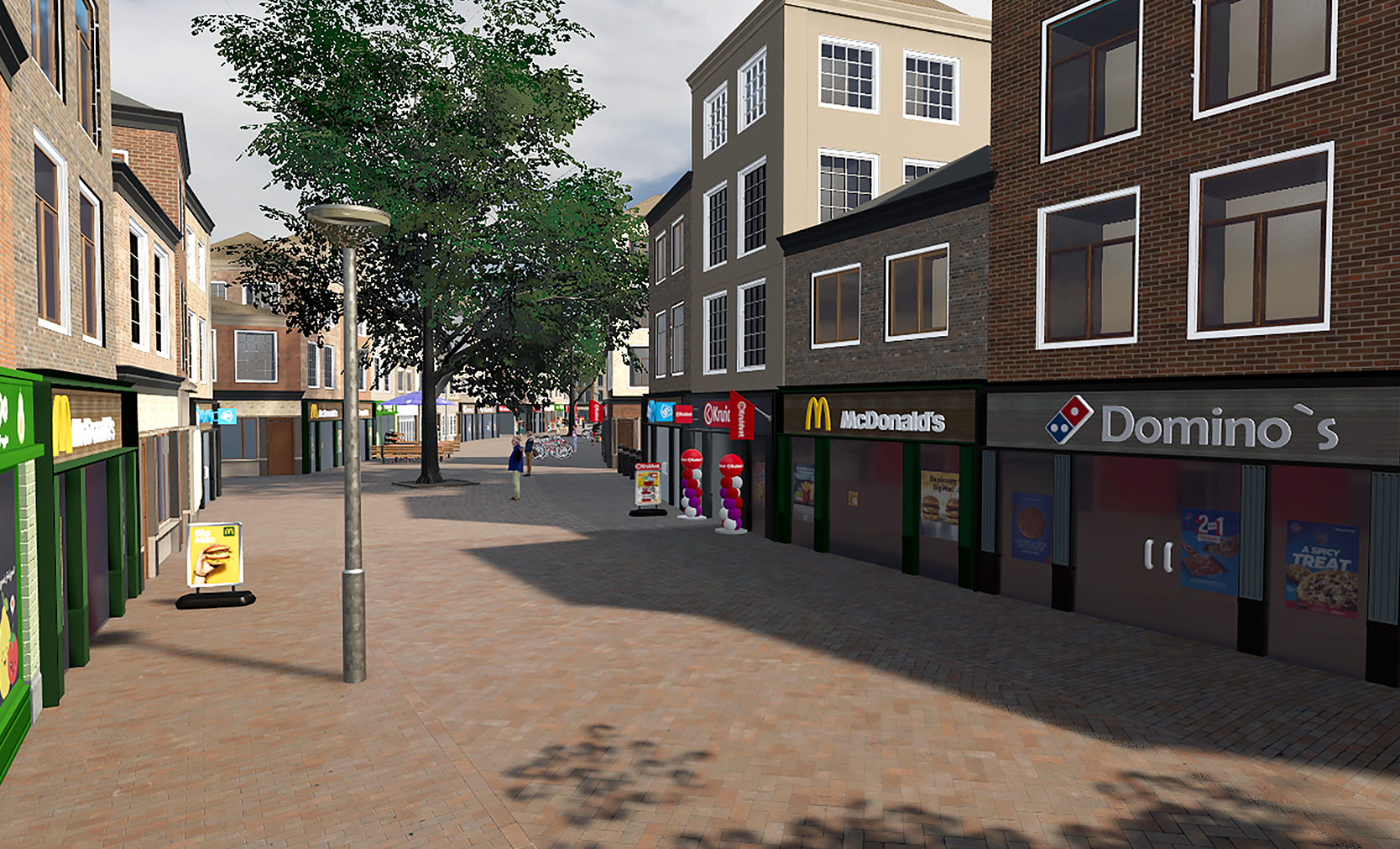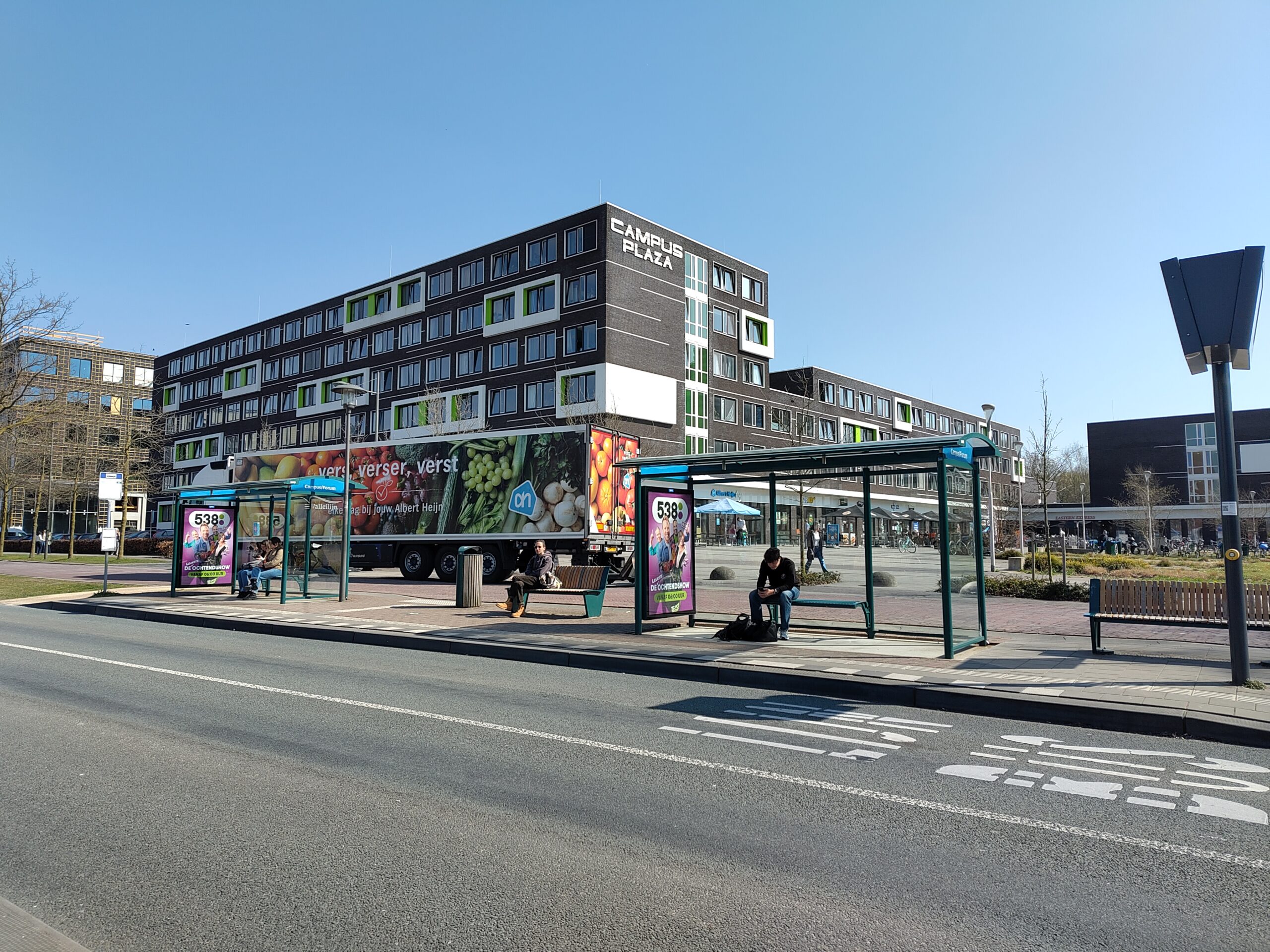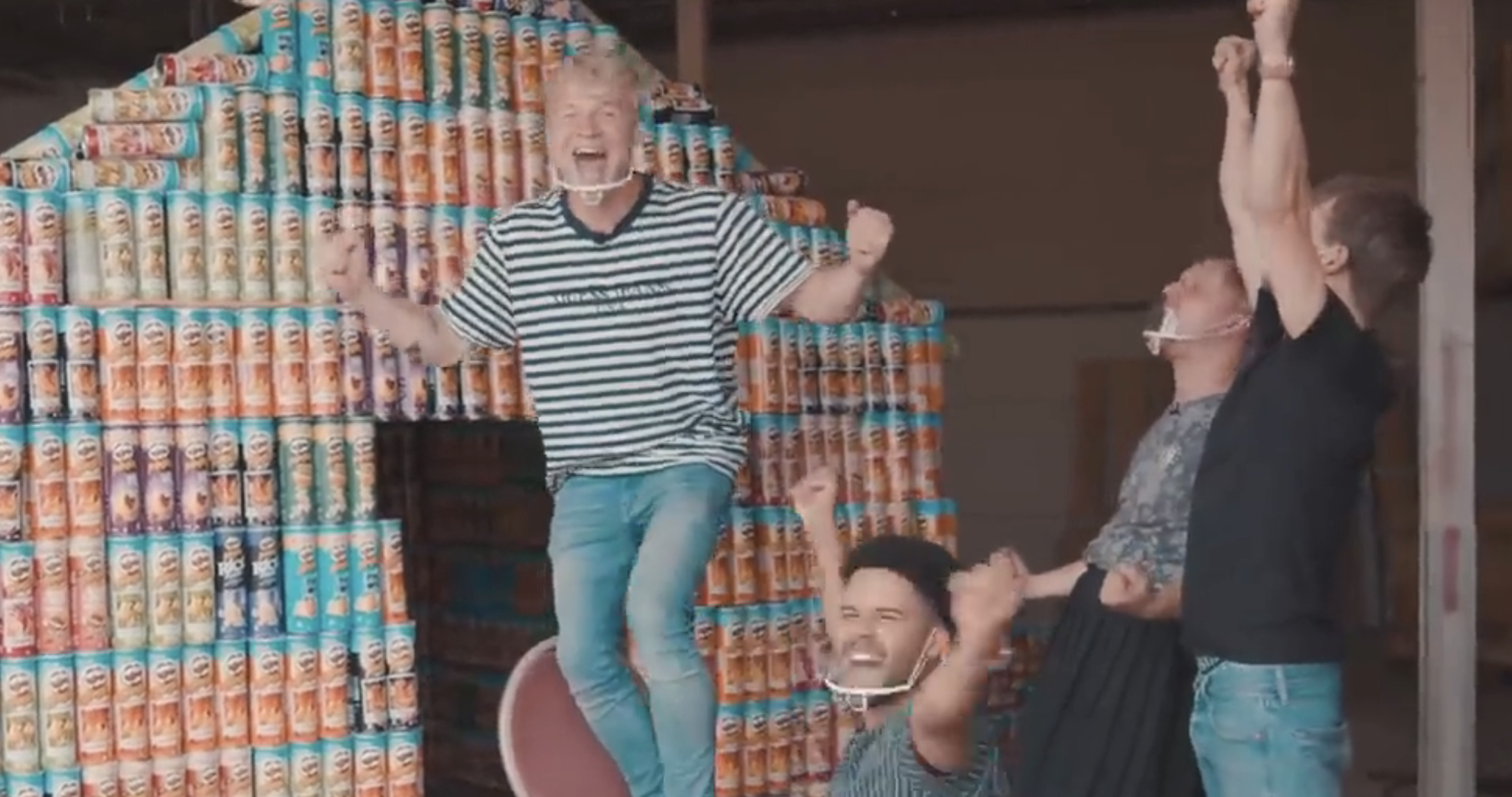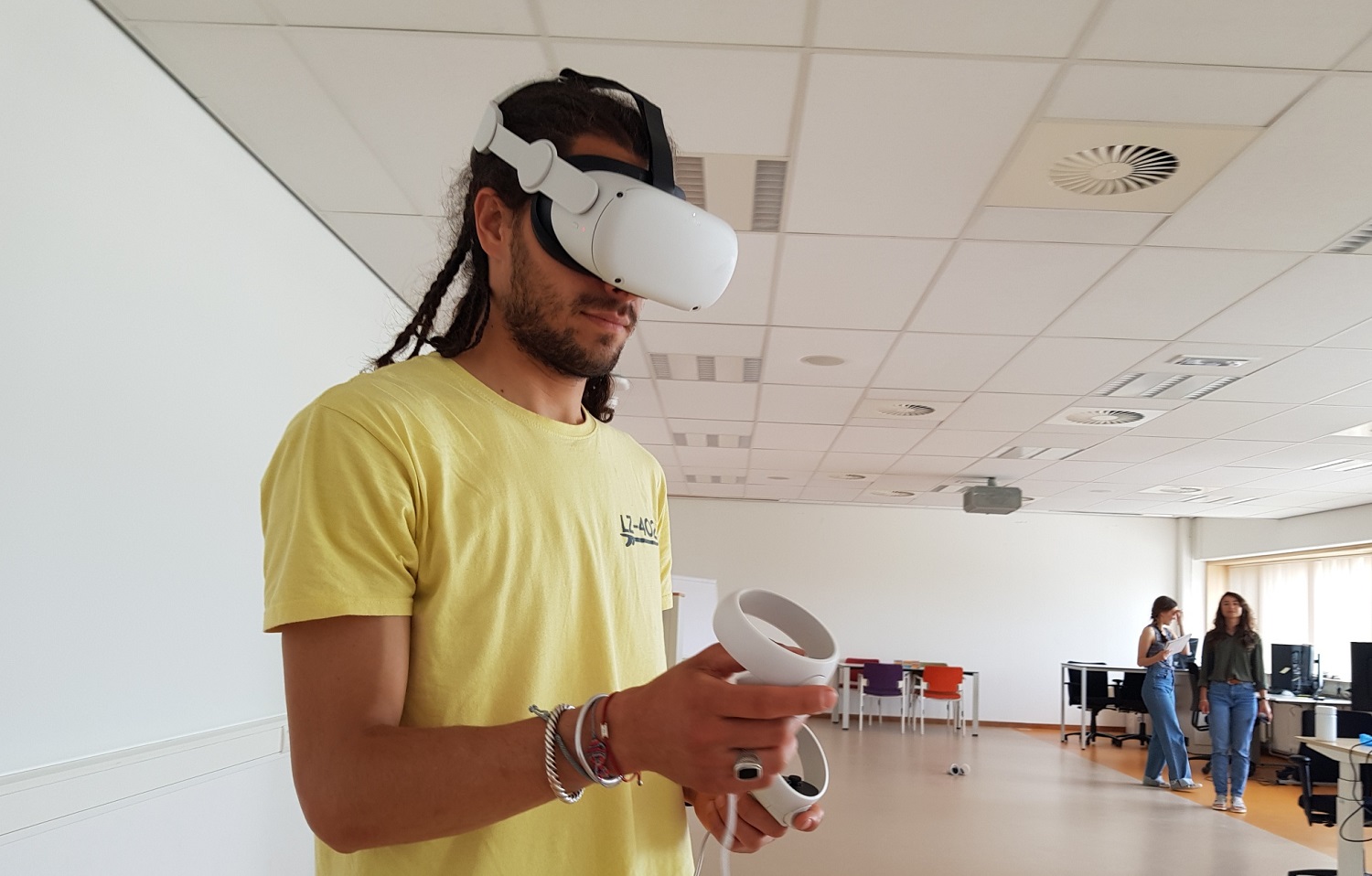You can make whatever changes you like in a virtual world. For example, you can decide how many fast-food ads someone sees when they walk home down a high street. The virtual reality lab WANDER has designed a Dutch shopping street that Consumption & Healthy Lifestyle researchers can use to try out realistic scenarios.
At the end of last year, associate professor of Consumption & Healthy Lifestyles Maartje Poelman approached WANDER XR Experience Lab. In her research, Poelman investigates whether we are tempted to adopt unhealthy eating habits by outdoor advertising, such as for chocolate at bus stops, ice cream at public swimming pools and beer at sports venues. Poelman was interested in creating a virtual world where she could manipulate the environment and expose test subjects to food ads and fast-food outlets to varying degrees.
WANDER developer Timon Verduijn took up the challenge. He built a virtual reality (VR) shopping street with realistic bollards, post boxes, waste containers and so on to make it look like a typical Dutch street. He based his shopping street on Diezerstraat in Zwolle, Amsterdamsestraatweg in Utrecht and Kalverstraat in Amsterdam.
‘The instruction was that it should take about five minutes to walk down the VR street,’ explains Verduijn.’Based on that and average walking speed, we worked out how much street we needed to design. The answer was roughly 500 metres.’ He gave the street some bends rather than making it straight. There is a practical reason for this. ‘If you make a straight VR street, you can see it disappear endlessly into the distance and so you need an immense length of shopping street to fill the image. Having a street with bends also saves on computing power because the computer doesn’t have to load the entire virtual street in one go; it just loads the street gradually as you walk along it. Anyway, it’s more realistic as the Netherlands hardly has any completely straight streets.’
Blocks
The design of a virtual world often starts with grey blocks. Verduijn was able to connect up various virtual blocks to quickly create something that looked like a street with shops. Then he added bends in the street, plus shadows, colours and textures. ‘For example, the street has normal cobbles down the middle, then a gutter to collect the water and then a pavement. We can do whatever we want but the trick is to make it realistic.’ Once the street was finished, he started on the buildings. Verduijn: ‘One firm requirement was to make the street look Dutch, with Dutch buildings and shops.’
We had to build a hundred different Dutch shop facades ourselves
When making a design, developers prefer to use ready-made 3D models built by other developers from all over the world, explains Verduijn. ‘Because that means you don’t have to start from scratch every time when programming. But the only shop facades available were for American shops and a few British and German ones. So we had to build at least a hundred different Dutch shop facades ourselves.’
Street furniture
Verduijn opted for a modular design for reasons of efficiency. ‘We created the roof, first and second floors as separate elements, with a couple of variants for each element.’ He was then able to easily create a lot of different buildings by combining the variants in different ways. ‘We even have a kind of 3D shop window with a slight reflection so you get the feeling you can really look inside the shop. Then we needed just one click to create virtual shops that look like what you would find in a Dutch shopping street.’
Verduijn was in luck when it came to the Dutch street furniture. ‘Someone else had already designed Dutch post boxes, waste containers and the typical black bollards. We added lamp posts, tables and benches to give people somewhere to sit and eat in the virtual world.’
No shopping street would look right without shoppers. To create them, Verduijn used virtual people from a digital library. He used code to give them instructions that let them move autonomously around the virtual world. They keep their distance from one another and the buildings, and they know not to walk into the post boxes. Verduijn: ‘But I needed to digitally close off the start and end of the street, otherwise they would escape.’
‘Finally, we gave the shops brands. For example, we created a Kruidvat pharmacy, a Domino’s pizza place, a McDonald’s, an Albert Heijn supermarket and a phone repair shop, all with the appropriate advertising. We did that using data from Maartje Poelman, who has an overview of the most common shops in Dutch shopping streets.’ The software Verduijn wrote has an option that lets you vary the number of healthy or unhealthy shops in the street. Poelman is currently using this in her research. The first results are expected this autumn.
WANDER XR Experience Lab
The WANDER lab was set up to assist with the use of 3D visualization and experiences in research and education. WANDER previously worked with the Amsterdam Institute for Advanced Metropolitan Solutions (AMS) and Amsterdam municipality to get a picture of the complex anatomy of tree roots in the city. That way, people working on restoring canal-sides would know how to avoid damaging tree roots.

 Illustration WANDER
Illustration WANDER 

